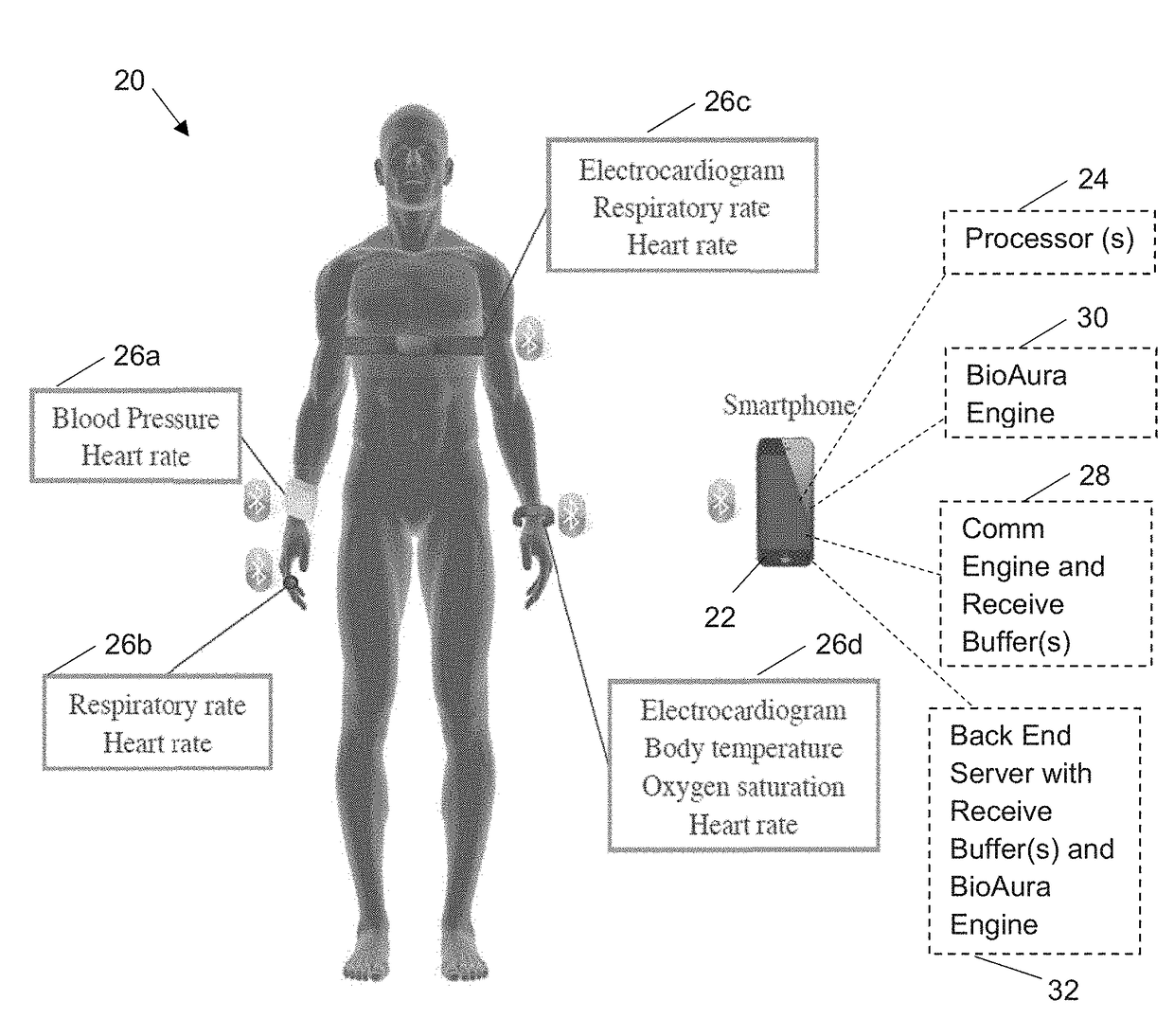Continuous authentication system and method based on bioaura
a bioaura and authentication system technology, applied in the field of authentication systems, can solve problems such as leakage of confidential data, encryption keys, and compromise of integrity, and achieve the effect of reducing the bandwidth needed for transmission
- Summary
- Abstract
- Description
- Claims
- Application Information
AI Technical Summary
Benefits of technology
Problems solved by technology
Method used
Image
Examples
example 1
[0075]FIG. 3 is a block diagram of a CABA system configured for authentication of a tablet 54. The system includes a smart phone 42 (base station) and a trusted server 50 (back end server). It should be understood that the smart phone 42 and trusted server 50 both include at least one processor. As disclosed above, biomedical data is collected from the WMSs 44 by the smartphone 42. The smartphone 42 also includes a communication engine 46 configured to retrieve the biomedical data from the receive buffers contained in the smart phone. The communication engine 46 may perform some signal processing on the biomedical data or simply re-transmit the raw biomedical data to the trusted server 50. The trusted server 50 is configured with receive buffers to store the biomedical data and a BioAura Engine 52 for processing the biomedical data from the receive buffers in the trusted server.
[0076]Suppose tablet 54 wants to authenticate its user using BioAura. The tablet may be unable to dedicate...
example 2
[0077]FIG. 4 is a block diagram of a CABA system configured for authentication of a personal computer 74. Suppose the user wants to login to his personal computer 74. In this case, the personal computer 74 has enough computational power and energy capacity to implement a stand-alone version of the BioAura engine 72. This case is similar to the one in Example 1, except that there is no need for a trusted server.
[0078]When the user tries to unlock the personal computer 74, the authentication engine 76 informs communication engine 66 in the user's smartphone 62 and establishes a secure communication channel. The communication engine 66 then sends the information required to authenticate the user (e.g., preprocessed frame of data points from his BioAura) to the BioAura engine 72 on the personal computer 74. The BioAura engine 72 then authenticates the user and sends this decision to the authentication engine 76. After initial login, the BioAura engine 72 demands fresh data points at cer...
PUM
 Login to View More
Login to View More Abstract
Description
Claims
Application Information
 Login to View More
Login to View More - R&D
- Intellectual Property
- Life Sciences
- Materials
- Tech Scout
- Unparalleled Data Quality
- Higher Quality Content
- 60% Fewer Hallucinations
Browse by: Latest US Patents, China's latest patents, Technical Efficacy Thesaurus, Application Domain, Technology Topic, Popular Technical Reports.
© 2025 PatSnap. All rights reserved.Legal|Privacy policy|Modern Slavery Act Transparency Statement|Sitemap|About US| Contact US: help@patsnap.com



